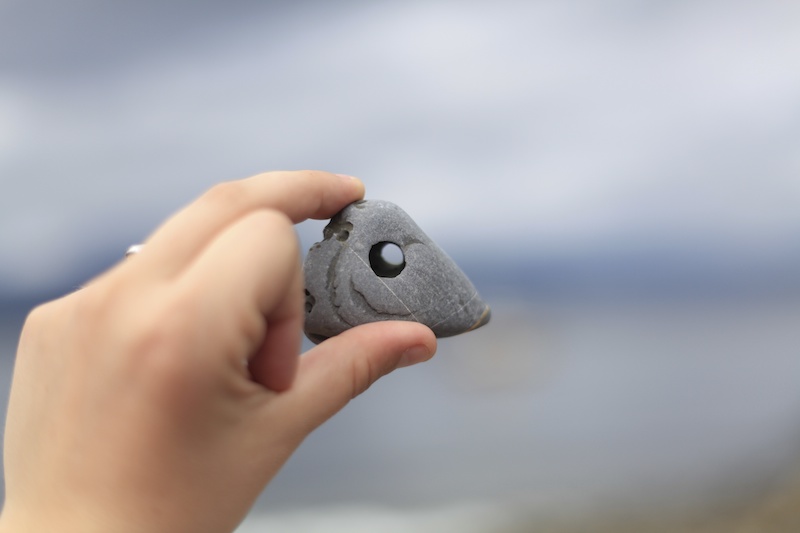
Piddocks – anything but boring
Recently we were pottering happily along a pebbly beach on the island of Lismore, and some of the stones that we were picking up looked like this.
Just one pebble with a hole in it you could probably accept as a happy stroke of luck – but there were many more! Some had just one hole, beautifully drilled and smooth on the inside, just wide enough to put your little finger in; others were perforated with a network of tiny tunnels, so that if you held one up you could see a thousand pinpoints of light. But how do these holes occur? They are certainly not caused by the sea. The culprit is a mollusc, and it is called a piddock.
WHAT ON EARTH ARE PIDDOCKS?

Piddocks are bivalves, and their specially-adapted oval shells are edged with fine teeth which they use to excavate burrows in rock. Their fleshy foot grips the stone surface and helps to rotate the shell, creating a circular scouring action. Piddocks will also drill into submerged wood, if it happens to be available.
Once the piddock has carved a safe tunnel for itself, it settles down inside and extends a siphon through the entrance, which it uses to filter food such as phytoplankton from the sea water. Another siphon empties waste products back into the sea. As the animal grows in size, it chisels at the walls of its rocky home to expand them.


Despite their tough-guy attitude, piddocks are elusive little things, and their shells are (amazingly) so brittle that, once exposed to the ocean, they are quickly broken up – which means that you are unlikely to find a whole piddock shell unless it’s still inside the stone.
However, if you’re walking along a beach and you pick up a pebble that is riddled with small holes – or one that looks like a half-inch drill bit has gone right through it – you’re probably holding a fine example of their handiwork.
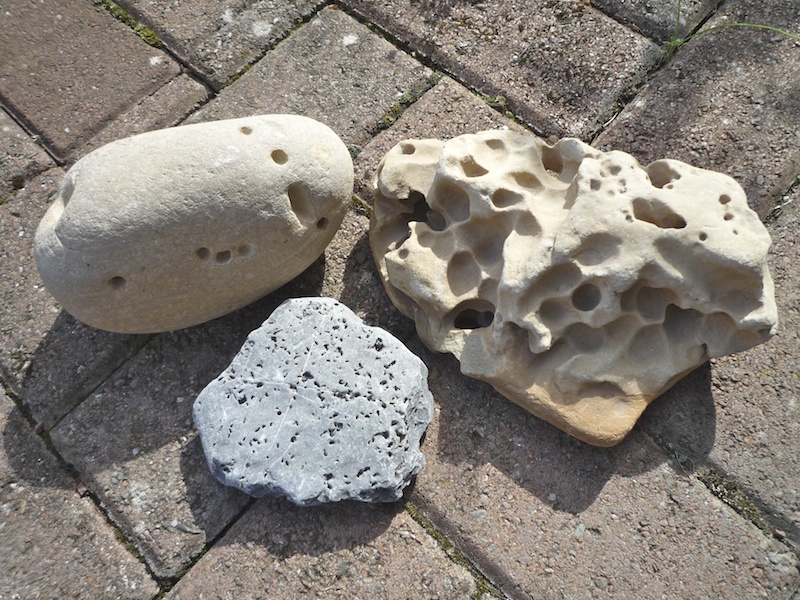 Several other species of mollusc, along with some worms and sponges, can also create holes in solid rock. These examples may have been carved by a number of different species.
Several other species of mollusc, along with some worms and sponges, can also create holes in solid rock. These examples may have been carved by a number of different species.

Piddocks are also known as Angelwings, which I think is a lovely name: you can immediately see why, when their shell is opened out. There are many species of piddocks, but the one that is native to British shores is the Common Piddock (Pholas dactylus). Surprisingly, it can grow to 15 cm in length.
PIDDOCKS AS KING-MAKERS?
Now, here is a fascinating story: piddocks in the genus Pholas are known to phosphoresce, or glow with a greenish light, in their burrows. That is delightful enough! But the 1905 edition of ‘The Victorian Naturalist’, the Journal and Magazine of the Field Naturalists’ Club of Victoria (Vol XXI), contains this startling announcement: “Pliny spoke of luminescence in the mouths of people who ate Pholas, the rock-boring shell-fish, and of such importance is this phenomenon that it is even said to have gained the first king of all Scotland his throne.”
If this is true, what a huge role for a humble mollusc! Sadly, I can find no more information to back up the claim. But that doesn’t stop my imagination from conjuring an interesting scene, perhaps at a banquet or even on a windswept rocky shore where the knowledge of ‘magical’ creatures might have given a vital edge to an early contender for Scotland’s crown. I shall look at piddocks in a whole new light from now on!

The wonderful thing about piddock art is that every piece is unique. I have several treasured examples – one with a shell still inside, which rattles when you shake it. If you tilt it, you can just see the tip of the piddock shell, but the burrow entrance is too narrow for it to drop out.
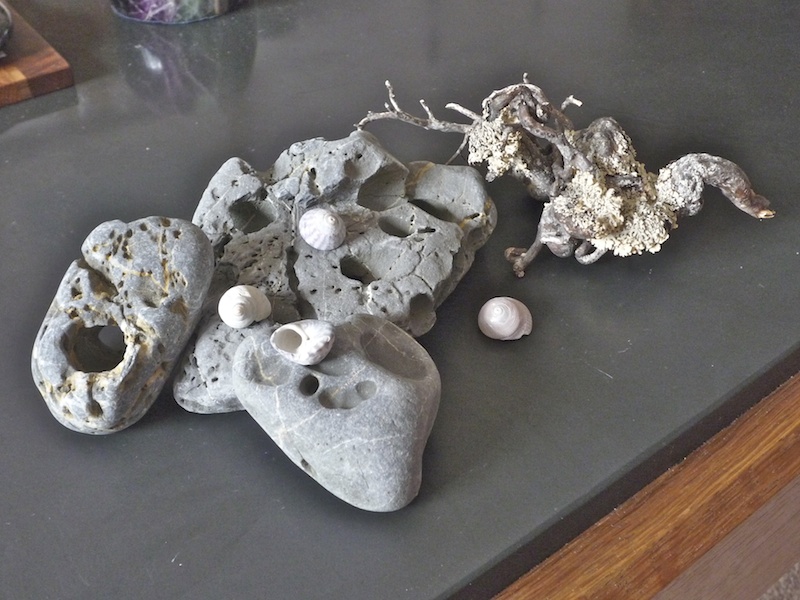
Piddocks aren’t the only molluscs capable of making holes in rock. Several others, along with worms and sponges, are described by Jessica Winder in this wonderful post on her Nature Blog, illustrated with some superb photos taken on beaches in the south of England. She also writes about piddocks, and has published some great photos of the creatures in action.
More examples of piddocks in various rocks can also be seen on the webpage of Japanese geologist Atsushi Chiyoda: The poetry of boringshells
Sources and further reading:
- The Sea Shore
- Marine Life Information Network
- World Register of Marine Species
- Encyclopaedia Britannica
Photos © copyright Colin & Jo Woolf unless otherwise stated.
For more fascinating rocks, take a look at
- Fossils at Carsaig Bay, Isle of Mull
- A surprise find on Seacliff beach
- Carnelian
- Coastal relics from the Ice Age
- Ardnamurchan’s volcano
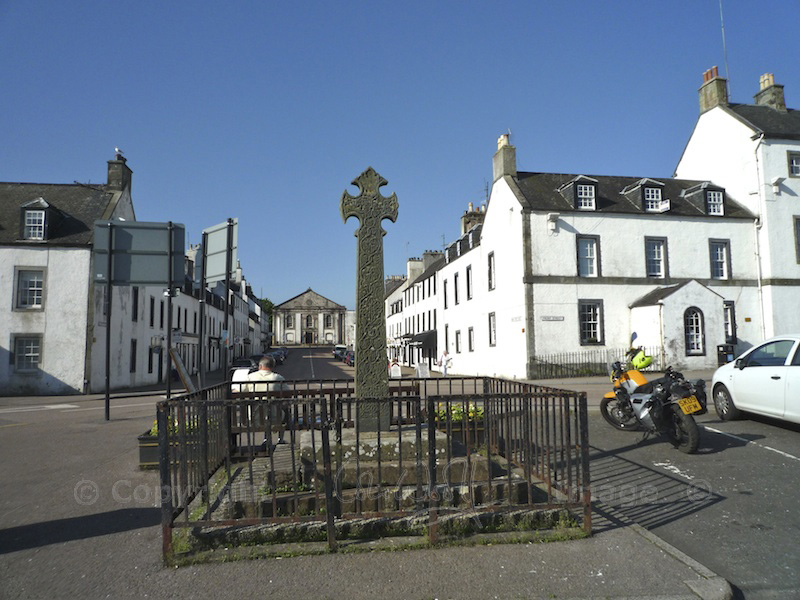
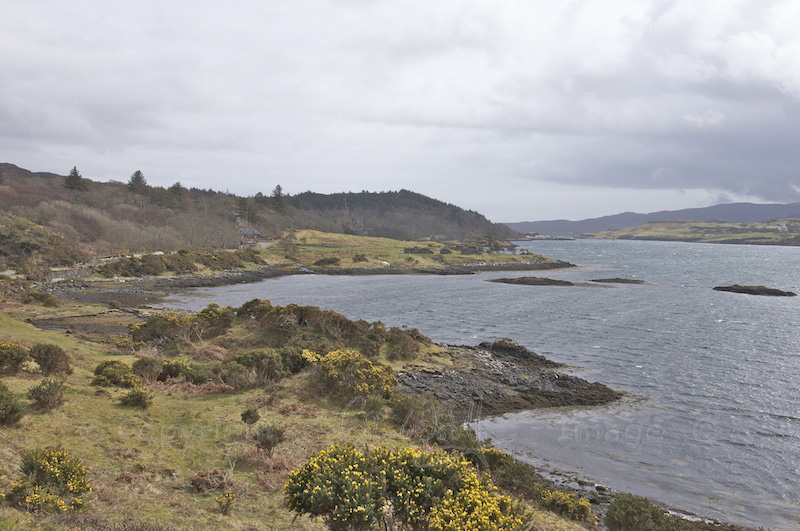



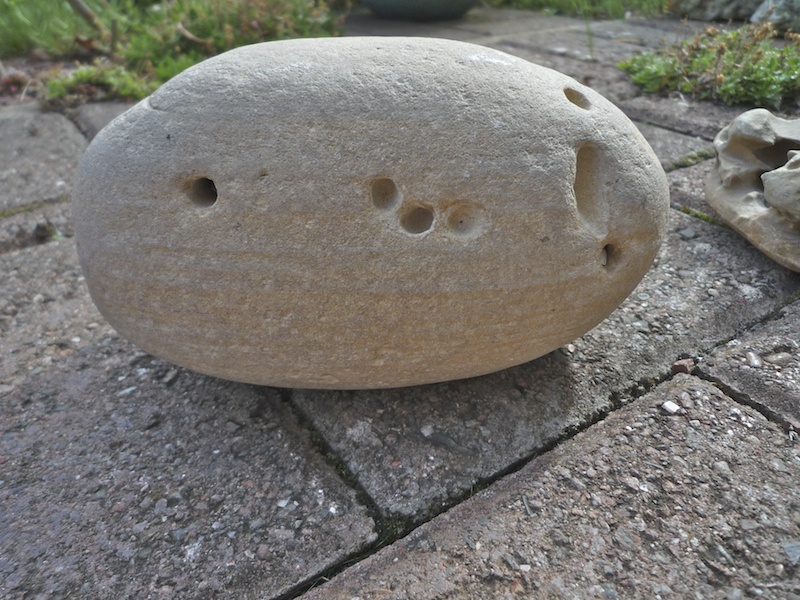

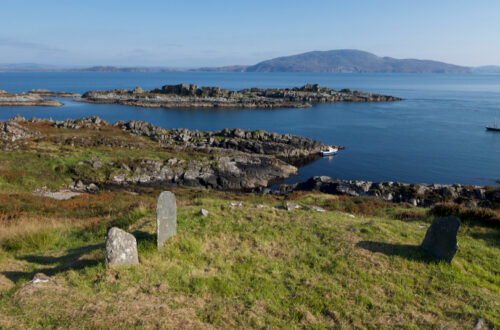
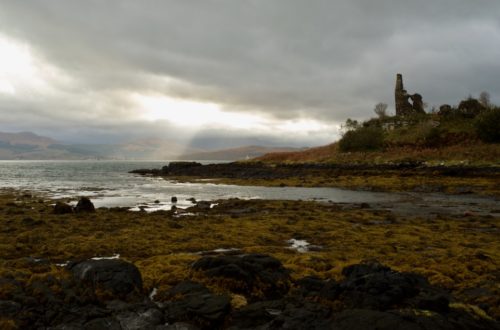
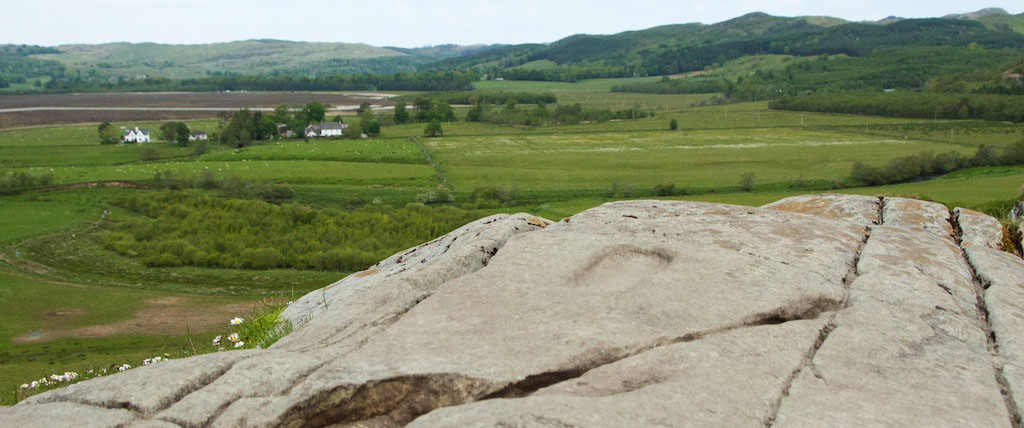
150 Comments
oawritingspoemspaintings
This is absolutely fascinating for me who collects shells & stones from around the world! (I ask anyone travelling to places I don’t, to bring me back those “presents” which to me, are far more valuable than any other souvenir)
As you wrote… I will certainly look with a different eye those stones 🙂
Thanks for this truly refreshing post… I’ll treasure that information every time I walk the beach.
Jo Woolf
Thank you very much, I’m so glad to hear you enjoyed it! I am also lucky in that I have friends who have brought me stones and shells back from places I’ve never been – I have a few bits of lava from Iceland, some wonderful desert rose crystals and geodes from Algeria, and some jade from New Zealand. They are cherished too! Thanks for your comment and good luck with your rock hunting!
Julio
I am myself one of those who collect pebbles and ask friends on their travels to bring me one as a souvenir, where I live in a small town near Barcelona the beach is full of this holy pebbles
Jo Woolf
Wonderful! I have friends who bring me back pebbles too. Glad to know that you can find piddocks near you! Always nice to find one! 🙂
housesandbooks
There must be a fresh-water North American equivalent of this mollusk because I have picked up stones like this, riddled with smooth holes, in many places near water in the Midwest. Thank you for this interesting post!
Jo Woolf
That’s an interesting thought! I don’t see any reason why there shouldn’t be freshwater piddocks too… wow, they’re everywhere!! 🙂 Thank you for your comment!
Nancy G Patterson
I have a number of piddocks that I’ve found on Lake Michigan’s shores. I assumed the holes were made when volcanic material mingled with other a harder rock substance and eroded away because of wave action, or were the result of volcanic bubbles left by cooling lava. I roam Michigan’s shorelines frequently. Now when I see a piddock, I’m going to look for a tiny shell inside the holes.
Kim
They’re called Omar’s in Michigan.
Jo Woolf
That’s interesting – I wonder where that comes from!
S Dymoke
Could be a local adaptation of a shell called Ormer, found in European and northeast Atlantic shores
Jo Woolf
That sounds very possible! Thank you for this.
tearoomdelights
Altogether astonishing! When you mentioned shaking a stone with a shell still inside, it triggered a memory of me doing that with a stone I found on a beach once, but it’s just a vague memory. From now on I’m going to be paying attention to any stones with wee holes in them. Thank you for the lesson on piddocks!
Jo Woolf
Aagh, now you’re going to be wondering where it was! I hope you find another! They are amazing little creatures, aren’t they?! I’m really glad you enjoyed finding out about them as much as I did!
PigLove
This is totally fascinating! They have so much character in them. Anyone one of them would be a wonderful sidekick to Bashful, *my* pet rock 🙂 XOXO – Bacon
Jo Woolf
Thank you, glad you found it interesting! I couldn’t believe someone had a pet rock called Bashful, but I checked your site and there he was! Say hi to Bashful for me! (Just going to count my own pet rocks now!) 😀 Good to hear from you, Bacon!
PigLove
I will definitely say hi to the little fellow for you. Right now, he is currently in France visiting friends. I don’t know if you checked out some of my posts from last week but he was on there with some of his adventures in France.
Earlier in the year, I wanted my own pet. Pigs get lonely too you know 🙂 I wrote to a company and they sent him to me for free. I was so pigstatic! A little friend all to my own. XOXO – Bacon
Jo Woolf
Thanks, Bacon! I will check out your rocky friend’s adventures! 🙂
Carmen Mandelc
Absolutely enchanting!. It is lovely to see that even the humblest of creatures can create such a wonderful universe. The nursery is an endearing sight. Thank you for this informative article with great pictures. Now I”ll take a look at my rock collection!.
Jo Woolf
Aren’t they lovely?! They do create their own universe, you’re right! I’m so glad you found it interesting. It’s really nice to meet other people who are just as passionate about rocks!
dhphotosite
So that’s what they are from! We always come home with rocks and shells when traveling. I’ve seen rocks with holes for years, but never thought to find out what created the holes. I thought it was just soft spots in the stone that were worn away. Fascinating!!!
Jo Woolf
Well, I’m pretty sure you have got some piddock holes in your collection by the sound of it! I guess not all holes in pebbles are made by piddocks but they are quite easy to identify once you have seen one or two. Now you’ll be looking for rocks with the piddocks still in them! 🙂
Hank.
Wonderful, Jo! Love the “peeping piddock” especially and the bit about the first king of Scotland’s glowing mouth–Kenneth MacAlpin, wasn’t it? Marvelous. Scotland’s cuisine can sometimes have a sort of stunt-food factor to it, so this doesn’t sound too far fetched. Heh heh!
Jo Woolf
Thank you, Hank! The whole ‘king of Scotland’ thing is mind-boggling. I’ll have to consult Neil Oliver about who was the first King of Scotland. I think he slightly disputes Kenneth MacAlpin’s claim! But then maybe he’s never heard of piddocks?!
Hank.
Oh! We love Neil Oliver! Love, love, love him! Especially that wee flip of his locks when he’s dashing off on a particularly interesting topic. Heh heh. What a great storyteller!
Jo Woolf
He’s so good, isn’t he?! He gets really passionate about the subjects he’s talking about! I love his books too – he has a great way of writing. A real storyteller, you’re right!
Scott Marshall
well I never – I have never been to Lismore but it is on the cards to do so – and when I do this blog I am sure will creep back in to my mindseye
Jo Woolf
It’s well worth going, Scott! I’m sure you’d find some great subjects for photography. Keep an eye open for piddocks!
Sansom Wedding Photography
Amazing post, its so interesting, those rocks I found look very nice in our rock collection! Can’t wait to keep collecting more! P.S Love your new background 🙂
Jo Woolf
Thank you! 😀 We found some good rocks that day, didn’t we! I’ve still got to find homes for some. Nice that you’ve started a collection too!
Cornel A.
Very ineteresting!
I would never thought that a small mollusc could drill something like that! Incredible!
Jo Woolf
No, I know, it’s amazing, isn’t it?
Debbie Richards
Great, I actually sat with my little boy the last few evenings down our beach in Southsea, and there were lots of them, I kept going on about them as I don’t remember seeing maybe one, let alone lots of them, just couldn’t understand how they got there right through rock, found it really baffling & odd! So thankyou for the info
Jo Woolf
Sounds like fun, Debbie. I have never been to Southsea but it sounds like a great place for piddocks! Thanks very much for your comment!
ordinarygood
Your post and photos sent my mind back to visiting Hawkes Bay beaches where there were so many rocks with holes or hollows in them. I had simply assumed (!) they were the result of water action on the greywacke rock and sandstone that is so prevalent in that area. But looky here:
http://www.teara.govt.nz/en/shellfish/page-4 We have similar boring wee critters drilling happily on our beaches too. I am off to consult my Native Animals of NZ book to learn more.
Kids would love to have glowing mouths just as potential kings obviously did!!!
Fascinating post Jo. Thank you…..and I love the word Piddock and the Angel Wings are simply beautiful.
Jo Woolf
Wow, so you have piddocks in NZ too! Thank you for the page link – I love the reference to shipworms and their damage to the ‘bridge over troubled waters’! Since writing this post I’m hearing of piddocks all over the world, (well maybe a slight exaggeration!) which is lovely! Thanks for this, Lyn.
mandala56
What great photos! And your collection looks so familiar, just like an Oregon beach. I loved the “peeping piddock.” Goodness, we’ve learned a lot this week!
Jo Woolf
Thank you very much! You’re right, we have learned a lot! I’ve really enjoyed it. 🙂
http://vivinfrance.wordpress.com
Fascinating. Much more so than anything on the course I’m doing at the moment (Understanding our Oceans, Southampton University). Thanks for the links, too.
Jo Woolf
That’s a pleasure! Really glad to help! 🙂
Debbie Richards
There are lots & lots of these on Southsea beach, we were near the Pier & the Pyramids, the tide was out so could see more
Andrea Stephenson
I have a few pieces of ‘piddock-art’ myself, but had never thought to investigate what a piddock looks like – beautiful, I love the ‘angelwing’ name and amazing that something so fragile can bore through rock.
Jo Woolf
I know – piddocks themselves are quite hard to find, although they leave their marks everywhere! You’re right, it is amazing that they can bore through rock, and make such perfectly round and smooth holes. I just love them! 🙂
Callie Jones
I found a rock at grover beach, California. And i dont know what it is. Can someone help me. I know its a fossil. But what is it. It was arock and i dropped it and inside is an egg like structure. Almost perfectly intact. Email me for photos
Jo Woolf
Hi Callie, that sounds interesting – you are welcome to email me with a pic at jo(at)madwolf.co.uk – I am not an expert but maybe I can point you in the direction of a website or forum that could help. Best wishes, Jo
Callie Jones
Where can i send you photos of my find?
Jo Woolf
My email is: jo(at)madwolf.co.uk
Gabrilelle
Hi! I don’t know if you’ll ever read this, but thank you for this awesome article! I looked up sea rocks with holes because I went to a beach in Goleta, California and was intrigued and surprised to find rocks with intricate & unique holes in them. This is an awesome discovery. These rocks are so amazing & I found some that are small enough to wear as a necklace. I’m giving them to my friends as gifts 🙂
Jo Woolf
Hi Gabrielle, That’s amazing! Thank you for letting me know! What a great discovery, and I’m so glad you found this article interesting. I am always finding piddock-holed stones myself and it’s wonderful to hear of other people finding them too! 🙂
wiggs66
Thanks for this excellent post on the humble piddock, which I stumbled across whilst thinking about holey stones, as opposed to holy stones! I’ve mentioned your blog, which I am now following, in my post ‘a light shines in the mouth’ on my blog at: https://mudpath.wordpress.com/
Jo Woolf
You’re most welcome, and I’m very glad you found some holey stones! 🙂 Once you’ve found one, you’ll be finding lots more (or that’s what happened for me). Thanks for following my blog! I hope you’ll find lots more of interest.
steve culbreth
Hard to figure a clam boring a hole in a rolling stone. I think they were occupying the holes opportunistically. These types of stones are found globally, and remains to be seen if the specie of clam is that wide-spread. http://www.dinosaurhome.com/forensic-paleo-biology-holey-rock-of-texas-806.html
Jo Woolf
Thank you for your slant on this, Steve.
Bud Laurent
Please allow an old marine biologist to weigh in on the subject of piddock posts found on this thread – 1) in referring to a type of organism, it’s always “species”, never “specie” – a misuse that would drive my major professor into small rages; 2) a piddock will not, cannot, survive in a “rolling” stone – by the time one sees a rounded stone with piddock holes, that stone has been broken from a siltstone subtidal ledge, rolled and tumbled by wave action, with the long dead clam only represented by its shell – all or partial; 3) as a great metaphor for the virtue of patience, paddocks have been found burrowed into jade in the Big Sur area of Central California! I was given a sample of a jade with piddock holes by a Big Sur original named “Jade Bob”…
Jo Woolf
Thank you, Bud! That’s interesting about the ‘rolling stone’. We were on the beach a few days ago with friends, and we found a whole piddock shell, loose but undamaged, which is now proudly exhibited in my collection! That’s interesting also about jade – certainly one very persistent piddock! On the same subject, I’ve had an enquiry from a geologist who is interested to know if piddock borings have ever been found in gneiss. I’ve promised to keep an eye open, but if you or any other readers have seen any, I’d be very grateful to know. Best wishes, Jo
Unknown
Actually I can find a lot of whole shell of the creature. I’ve also found one alive. It was on a sand bar so I placed it back in a tide pool. I never knew what they where until now.
Jo Woolf
I’m glad that you’ve found some whole shells, and interesting to know that you have found a live piddock. Thanks for your comment.
vapor1vixen
I’ve moved from Pennsylvania to Tennessee 15 years ago I have a stone ring it looks like that it would fit on a child’s finger and I found a perfectly shaped egg rock also . I posted it on my Facebook page I thought that they were Native American since there so many arrowheads on my property
Jo Woolf
What wonderful finds! Real treasures. Thanks for telling me about them.
paulineperry65
What a great article – I have learned so much and am thrilled to know what those fabulously perfect holes are in stones and how they were made. My granddaughter will be delighted to know too. Thank you so much.
Pauline
perry94022 at hotmail dot com
Jo Woolf
So glad you enjoyed it, Pauline, and thank you! I hope your granddaughter will love collecting them as much as I do! 🙂
Ed
Fascinating article
Jo Woolf
Thank you! 🙂
Pam Sequeira
Amazing! I live in southeastern Oregon, and have found many rocks with holes in them. Would I be correct in assuming that the high desert area I live in was once under water and a home for Piddocks?
Jo Woolf
Thanks for your question, Pam! I don’t really know enough about the geology of Oregon to say with any certainty. If you know that the region was definitely under water at some stage, I guess it’s a possibility. But if the region is volcanic, I know that some volcanic rocks such as basalt can also have little holes (vesicles) in them that were formed by gas bubbles. This page might help: https://en.wikipedia.org/wiki/High_Desert_%28Oregon%29
Pam Sequeira
I’ll bet you’re right. There was a LOT of volcanic activity here.
Thanks so much for the reply. 🙂
Sharon King
Awesome, amazing and wonderous!!! Thanks for sharing.
Jo Woolf
Most welcome, Sharon! Thanks for your kind comment. 🙂
Linda
Wonderful! So many of my rocks make a lot more sense, now!
Jo Woolf
Haha, glad to hear it! 🙂
Diane Bailey Beger
I really enjoyed this informative article!
Jo Woolf
Really glad to hear it, Diane! Thanks for letting me know! 🙂
toekneep
I hope you don’t mind but I have linked to your blog in a post on FB and Twitter. I have three stones with holes made by Piddocks that I use on my stand when promoting The Wildlife Trust. They attract an enormous amount of interest and I found your blog when researching them. Thanks for putting such fascinating information on line.
Jo Woolf
Most welcome, and thank you for sharing it! 🙂 People seem to love finding out about them – and there’s something really pleasing about piddock ‘artwork’! Well done for spreading the word!
Hecataine
Reblogged this on The Witch Hecataine.
Fiona
Where I live in Chichester harbour, I grew so knowing them as lucky stones!
Jo Woolf
Thank you for sharing this. Another great reason to collect them! 🙂
sulewath
Really interesting article. I’ve lived by the sea all my life and never heard of piddocks, so I’ve learned something new today. Will soon be off to the beach to look for some! I wonder if they bore through Lewisian gneiss, though? Will have to go and have look.
Jo Woolf
Thank you! I’m really glad you’re going to look for some piddocks yourself! That’s a good point about the Lewisian gneiss. I don’t remember seeing any piddock-holed rocks when I was up on Lewis. Let me know if you find any! 🙂
sulewath
Will do!
Terry Gard
I have found a piece of sandstone with several holes made by piddocks. Some of the holes still have shells in them. The odd thing is that I found it in my vineyard near Calistoga, California. Either the San Francisco bay reached this site or it is a fresh water species?
Comments?
Jo Woolf
That’s very interesting! I have not heard of freshwater piddocks but I am not a scientist so maybe you would be better advised to consult the marine science department of your local University. I guess there is a chance that it was carried there, either by tidal action or human effort?! Thanks for your comment!
mason
i have found these in a creek bed in Lewis co. Ky.
William Grange
Excellent article.
Jo Woolf
Thank you! Really glad you found it interesting.
Julie Holm
Wonderful to find you.. I knew that some Mollusk did the ‘drilling’, but love knowing more.. The pictures are fantastic–make me a bit envious..
Thanks for sharing and giving me something to enjoy and learn..
Jo Woolf
You are most welcome, Julie, and thanks for your kind comment! 🙂
Edith Douglas
Had no idea therenwere such things as piddocks, though I have seen those holes. Thanks for adding to my knowledge. The photos are excellent, I think.
Jo Woolf
You’re most welcome, Edith! Really glad you enjoyed reading about them. I keep finding them everywhere myself, now I know what to look for!
naldasearles
Wonderful article. I have a collection of more than 300 holed stones including piddocks.. love them and every one has its own history.. mostly gathered in Australia but one from Scotland, one from river Thames and numerous from America.. my eyes are so tuned into holed stones I will invariably find one where ever i seek.
Jo Woolf
That sounds like a fantastic collection! Truly international! 🙂 It’s strange how holed stones suddenly appear when you start looking for them. There must be some kind of magic in them, because so many people are drawn to them!
naldasearles
There is an enormous ancient river bed her dis West aunt. billions of river washed stones and amongst them many holed stones but one must walk around doubled over to find them… some tiny some very very large. Its paradise for fossickers like myself but isolated. takes a week to get there.
Jo Woolf
Sounds fantastic! Whereabouts again? Predictive text on overdrive I suspect!
Ned Coleman
Something I like about Facebook
Some random answer I’d not known
Suddenly shines out of nowhere
And now it’s something that I own
I grew up near the western coast
And often would pick up such rocks
But never understood that they
We’re fashioned by little piddocks
So now that’s something that I own
Some random post here by a friend
Some knowledge I’d have never known
Tapped that LIKE button once again . . .
Jo Woolf
Wow, lovely – thank you so much Ned! The internet is amazing! Welcome to the world of piddocks – I’m glad you found this interesting! Very best wishes, Jo
Tammie
such a lovely response.
vapor1vixen
Wish I could post a picture of mine.
georgie lyng
This is really interesting to me because I uploaded several photos of these to the Natural History Museum in London, asking what they were. A supposed ‘expert’ told they were man made !!! I always thought he was wrong, now I know better haha! Thanks!
Jo Woolf
Well I’m glad you’ve solved the mystery, Georgie! Pebbles with holes in them have plenty of different sources but if you know they were found on a shore you’ve got a very good clue! Glad you found it useful – thanks for your comment! 🙂
Susan
So, we have found rocks “growing” in some of these indentations– aggregations, I believe.
Do you know anything about Indian paint pots, which are rocks that contain a paint-like liquid inside of them (that can also dry out into a powder). The outside of these rocks are a dull, brown, sometimes coarse and sometimes smooth.
Jo Woolf
Hi Susan, I have never heard of Indian paint pots – they sound fascinating. Had a quick look online and it seems they contain iron oxide, which would give a reddish hue when mixed with water. Thanks for your comment! Very interesting.
Bard Judith
I’m a Canadian living on the East Coast of South Korea; our beach not five minutes from our university/housing is full of piddock-riddled stones, both the small grey single-holed ones suitable for making necklaces, and the larger ‘swiss cheese’ boulders, still containing the shells (just as you describe, nested inside and larger than the opening they initially drilled!) So in case no one has reported in from Asia, yup, we do have piddocks here. I use the large emptied ones for a sea-side style rock garden on my balcony, and they are beautiful.
Jo Woolf
Fantastic! Thank you for describing them where you are! Piddocks are obviously international beings! I’m glad you admire their artwork! 🙂
Ellen Taylor
I have, I think one of these rocks. I don’t even remember where I got it. Interesting.
Jo Woolf
Maybe you’ll be finding some more now – I hope you do! 🙂
Janice Mare McFarland
Have three holey stones! One is drilled through it’s length like a bead with a hole through the side. And has a small remnant of shell on the inside wall of the stone.
Jo Woolf
What treasures! 🙂
Pat
Loved this info. Thank you so much. Always love finding, “holey-stones”?
Jo Woolf
Thank you, Pat! You are most welcome. I love finding them too! 🙂
Ann
I’ll be checking over my pebble collection after reading this. Great info! I do have several beach pebbles with holes that appear drilled.
Jo Woolf
Excellent! Sounds like some evidence of piddock holes already! What I found was that, once I knew what they were, I started to find lots more.
Jenn
They are also called hag stones, Odin stones or holey stones, used to ser the hidden world of fairies, protection and healing.
Jo Woolf
Oh that’s interesting! Thank you for that. I did know that looking through a hole in a stone was supposed to give you second sight. I hadn’t heard the other names!
Judith R
I found a crescent moon in a white stone on a beach in SE England on the day I buried my daughter. It was an incredible find and I have this stone 17 years!!
Jo Woolf
What a lovely and touching find. I believe we come across these things because we are meant to – it’s not just coincidence. Thank you so much for sharing this.
Michelle
Wonderful! What a pleasure it was to learn the answers to questions ive asked myself for years. Thank you x
Jo Woolf
I’m so glad it has helped to solve a puzzle! You are most welcome, and thank you for your comment! 🙂
Mary
Fascinating, I have seen loads of these sometimes with the paddock inside, never knew what caused the holes or how the little fellow got in there, thank you for such an informative article, I am constantly amazed by what is all around us. So interesting, than you.
Jo Woolf
Most welcome, Mary! I love finding them myself, and luckily the beaches around Scotland have lots of piddock-holed stones. Really glad you found it useful, and I hope you find lots more!
Anne nishmas
For the last 25 years in southwest florida(Venice,and Engelwood Florida Gilf of Mexico)in the winter I have picked stones with holes. I read (I do not remember the name of the book) in a southwest Florida nature book that some kind of a snail sits on the stones and secretes a solution of sorts which the sea and sand eventually bores a hole right through. I have found different sizes from one inch to three by four inches. They make beautiful sculptures as well as natural jewelry. Thanks for your information on all of these wonderful natural gifts on this earth.
Jo Woolf
You’re most welcome, Anne! I’m glad to hear about your finds – all precious treasures! 🙂
Les
We thread a piece of string through the hole and hang it by the door of the house to keep Witches away. Here in the North-West of England they are known as Witches Stones
Jo Woolf
That’s very interesting! Thank you for sharing it. 🙂
Tammie
Thank you for sharing this information. So interesting. I never wondered what made those holes, which seems surprising. We considered them ‘holy’ rocks and wear small ones on a thread. Or to hold a piece of incense. So much fun to consider.
Jo Woolf
That is a good idea! I love how everyone around the world seems to be drawn to these rocks. Thank you for sharing!
Carol
Are there piddocks in fresh water lakes?
Jo Woolf
Hi Carol, I don’t know for sure but I’m inclined to think they are marine creatures. If anyone has more definite info, they are welcome to leave a comment!
Craig
Yes there are many piddocks in fresh water , I have found many in Lake Michigan north of Chicago , I always called them holey stones ,or church rocks , Wow glad to know how those holes got there . Thanks for the information . If it wasn’t – 9 degrees today I would be at the beach .
Jo Woolf
Thank you for sharing that, Craig! I’m glad to know there are freshwater piddocks as well as marine ones. ‘Church rocks’ – that’s an interesting name! I agree that minus 9 sounds way too chilly to be at the beach!
Mary Berman
Fascinating…..In the past, I have tossed them. Won’t do it again.
Jo Woolf
Glad you enjoyed it! Thank you.
piscatore2
Hi,
I find these in Maine in the Penobscot and Allagash rivers, far from the ocean. Amazing. Should I assume they are very old “Piddock Stones,” left over from when Maine was covered by a sea?
email has changed: piscatore6@gmail.com
Many thanks,
Dee
Jo Woolf
Hi Dee, I am sorry but I can’t answer that! You are welcome to email photos to jo(at)thehazeltree.co.uk They sound very intriguing. However, I can’t promise to identify them! Best wishes, Jo
Gloria
I love the holey rocks! I never knew how the holes got there.. now I do. I love collecting shells, when I see the tourist on the beach searching for shells, I like to stop and talk about shells. I tell them the name of the shell, I can’t wait to tell someone how the holes get in the rocks….so interesting. We get a lot of piddocks here we call them angel wings. Tiny ones and big ones. They are fragile like potato chips.The bigger they are the stronger they are. I love learning about shells. I live in Galveston Island Texas. Thank you !
Jo Woolf
You’re most welcome Gloria, and it’s good to know you enjoy collecting holey rocks too! There is definitely something special about them. Thanks so much for your comment.
Lyn
I collect rocks and stuff from south Lake Michigan – I have found these – I call them Moon Rocks but now I know what they really are….awesome!
Jo Woolf
Fantastic! I love your name for them – I might use that myself! 🙂 Thanks for your comment!
Robert Turner
I never knew this!Where I live in the middle of Canada was once covered by an inland sea 80 million years ago.I have picked up alot of rocks much like you have pictured and never considered it the handy work of a creature rather than erosion or quirk of formation.Now I’ll have to think about which is which.
Jo Woolf
Wow, that’s interesting! I’ve not heard of paddock relics that old but I can quite see how it’s possible! Let me know if you come to any conclusions!
carylbeach
There are many of these holey stones on the East Coast of England . I collect them and didn’t know how they were formed- I assumed from erosion. Thank you for the interesting information.
Jo Woolf
Glad that this was of interest! Plenty here on the west coast too, and I still love finding them even though I have lots already!
Tiffany
Kim, the Omars, in Michigan, of which you speak, are not these. Omars are a greywacke stone, from the Belcher Islands, transported via glactial activity.
John W Corbett
Any records of marine over harvesting especially on the West Coast
Jo Woolf
I’m not the best person to advise you on that, John. You might be interested to know of a group called ‘Friends of the Sound of Jura’ – https://www.friendsofthesoundofjura.org.uk/ Best wishes, Jo
Denni
I have a large, very heavy rock, about 15” x 18”, & 5” deep, with very deep, defined holes. I showed a photo of it to a friend who collects rocks today, & she said, “Wow, what a great find, they’re supposed to be lucky too”! She told me it’s Piddock rock, & one that size is rare. I’d never heard of them before, but it’s very interesting. I’ve got one the size of most displayed here too, but the bigger rock is massive. Too bad there’s no way to add a photo, to be sure.
Thanks for the great article!
Jo Woolf
That sounds amazing, Denni! There are some big piddock-holed rocks down on the shore here in Argyll – it seems, the more you find, the more keep popping up! It sounds as if you have got a real treasure there. I was very interested to read about the illustrious history of piddocks when I wrote this article! Remember that other marine creatures are also capable of drilling such holes – and take a look at the links I included in the article, if you haven’t already, because they’re very informative. Thanks so much for your lovely comment!
Barbara
Thanks so much for this post! I live on Vancouver Island (west coast of Canada) and have a growing collection of interesting rocks from beach walks. Many have holes and look amazingly similar to the ones you have pictured. Now I know how they came to be and they are even more interesting.
Jo Woolf
You’re most welcome, Barbara! I’m delighted to know that you’ve got a collection of interesting rocks – I’m a lifelong collector myself! Glad to hear that this post has helped to solve the puzzle of the holes!
Pingback:
Bayu Ocktaviandy Hermansyah
Thanks for this excellent post on the humble piddock,
Jo Woolf
You’re welcome, I’m glad you enjoyed it!